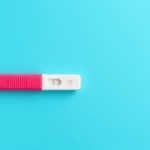Understanding Successful Implantation
In the world of reproductive health, the term “successful implantation” describes the process where a fertilized egg attaches itself to the lining of the uterus. This crucial step is essential for pregnancy to proceed. Signs of successful implantation may vary among individuals. Many women fear that implantation will be accompanied by bleeding, leading to confusion about the process. However, it is possible to successfully implant without experiencing any bleeding.
Successful implantation would ideally occur around 6-10 days after conception. During this phase, the body undergoes various hormonal changes to support the developing embryo. The absence of bleeding during this time may indicate a healthy implantation process, as it often manifests as a more stable hormonal environment. While some women may experience slight spotting due to the implantation process, many do not encounter any bleeding at all. Understanding these factors can help women be more aware of their bodies and recognize the signs of successful implantation without unnecessary worry.
Signs of Successful Implantation
Women often wonder about the signs that indicate successful implantation without bleeding. These signs can include various physical and emotional changes. Understanding these can provide reassurance and clarity.
Among the common signs are:
- Early Pregnancy Symptoms: Many women report signs such as nausea, tender breasts, and fatigue.
- Increased Basal Body Temperature: A rise in basal body temperature can indicate hormonal changes after implantation.
- Cramping: Some women may experience mild cramping as the fertilized egg implants itself.
- Heightened Sense of Smell: This can be an early indication of pregnancy.
While these signs are not exclusive to implantation, they can help signify a successful process.
Understanding Hormonal Changes
The hormonal environment plays a crucial role in successful implantation. After fertilization, the body produces numerous hormones, primarily human chorionic gonadotropin (hCG), estrogen, and progesterone. These hormones help in preparing the uterine lining for implantation.
hCG is vital for maintaining pregnancy. It signals the ovaries to continue producing progesterone, which is essential for nurturing the embryo. An increase in progesterone levels often coincides with successful implantation as it thickens the uterine lining, making it more hospitable for the fertilized egg.
Estrogen also plays a significant role by helping to regulate other hormones and maintain blood pressure, contributing to placental development.
In the absence of these hormonal changes, the likelihood of successful implantation decreases significantly. Women should monitor these hormonal signs as indications of a supportive environment for pregnancy.
Signs of Implantation Cramping
Cramping can be an indication of successful implantation and, in many cases, occurs without bleeding. This cramping is usually mild and can feel similar to menstrual cramps. It typically results from the uterus adapting to the presence of the embryo.
The timing of implantation cramps usually falls within a week after ovulation, coinciding with the ideal period for successful implantation. It is essential to recognize the nature of these cramps; they should not be severe or accompanied by sharp pain, which may indicate complications.
For many women, recognizing the difference between menstrual cramps and implantation cramps is crucial. Menstrual cramps may last several days with varying intensity, whereas implantation cramps are often brief and less intense.
Tracking Basal Body Temperature
Monitoring basal body temperature (BBT) can unveil signs of successful implantation without bleeding. This method involves charting your body temperature daily to detect subtle changes. Following ovulation, a woman’s BBT typically rises due to increased progesterone levels.
If implantation is successful, this elevated temperature can be sustained for a longer period than normal. Women interested in tracking their BBT should keep a thermometer beside their bed and take their temperature first thing every morning.
By consistently tracking these changes, women can gain a clearer picture of their reproductive health and identify signs associated with successful implantation.
The Role of Emotional Changes
Successful implantation can also lead to emotional and psychological changes in women, marking a shift due to hormonal fluctuations. It’s essential to recognize that emotional signs can sometimes be overlooked amidst physical symptoms.
Women may notice an increase in mood swings, heightened sensitivity, or generalized feelings of unease or anxiety. Feelings of anxiety are completely normal and are tied to changes in hormonal levels, particularly from hCG and progesterone.
A holistic understanding of both physical and emotional signs allows women to have a well-rounded view of their experiences during early pregnancy.
Understanding Spotting vs. Bleeding
Spotting can sometimes occur during implantation but is not experienced by all women. This spotting is usually light and may appear as pink or brown discharge, contrasting with menstrual bleeding.
Understanding the differences can help alleviate concerns regarding any form of bleeding. Spotting that is primarily brown or pink and minimal in volume can often be a normal sign of implantation.
On the other hand, if bleeding is heavy and resembles menstrual bleeding, medical guidance should be sought to rule out complications. Being aware of these differences is crucial for emotional well-being and physical health.
Recognizing your Body’s Signals
Listening to one’s body is significant for recognizing signs of successful implantation. Being in tune with changes in your body during this time can enhance awareness and promote emotional health.
This includes understanding cramps, fatigue, mood shifts, and other signs discussed previously. Keeping a journal that tracks daily symptoms can empower women by providing insights into their reproductive health.
Recognizing these signals aids in making informed decisions regarding health and seeking medical advice when necessary.
Final Thoughts
In conclusion, understanding the signs of successful implantation without bleeding is essential for women trying to conceive. Signs can manifest in various forms including physical symptoms such as cramping, nausea, or heightened basal body temperature, as well as emotional changes due to hormonal shifts. Recognizing differences between spotting and menstrual bleeding can contribute to clarity regarding reproductive health.
Establishing a connection between emotional and physical changes can help women tune into their bodies and identify these signs more effectively. While successful implantation is often characterized by the absence of bleeding, many will experience specific signs of implantation even without extensive bleeding. Failure to notice these signs could lead to unnecessary anxiety during early pregnancy. Therefore, comprehensive awareness of both physical and emotional signs offers a holistic understanding of this critical reproductive process.
The journey of trying to conceive can be filled with anticipation and anxiety. By understanding and interpreting these signs correctly, women can navigate their experiences with a sense of empowerment and clarity.
Frequently Asked Questions
1. Can I experience successful implantation without bleeding?
Yes, many women experience successful implantation without any bleeding.
2. What are the signs of successful implantation?
Signs can include mild cramping, fatigue, nausea, and increased basal body temperature.
3. How long after ovulation does implantation occur?
Implantation typically occurs 6-10 days after ovulation.
4. Can stress affect implantation?
Yes, high stress levels can impact hormonal balance, potentially affecting implantation.
5. Should I seek medical advice if I experience heavy bleeding?
Yes, if you experience heavy bleeding, it is important to consult a healthcare professional.
Further Reading
What Type of Psychotherapy Is Best for Anxiety?







